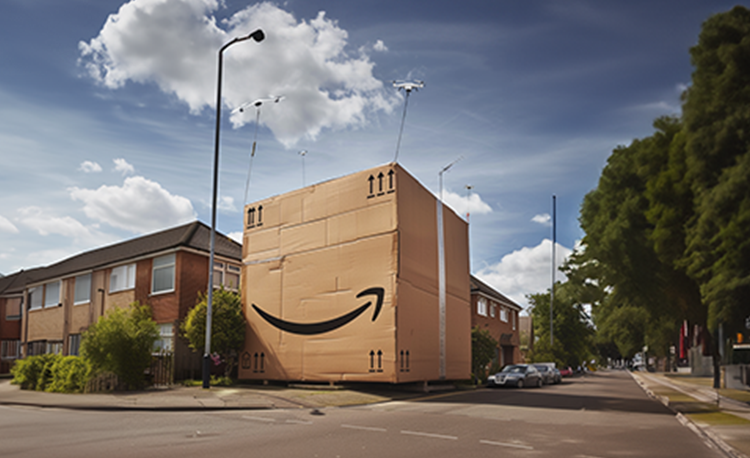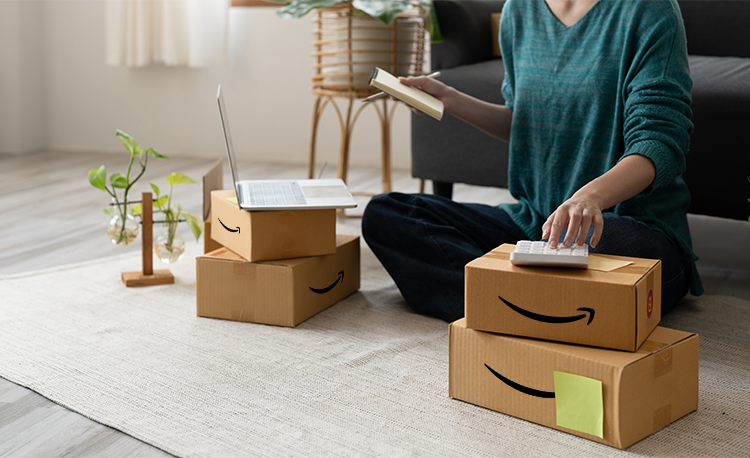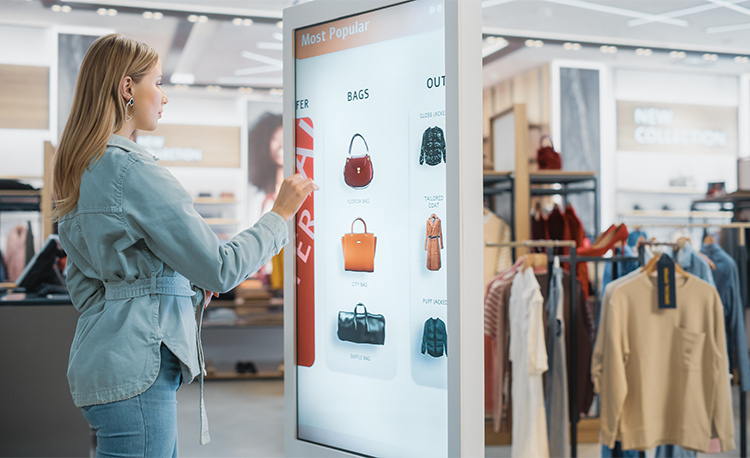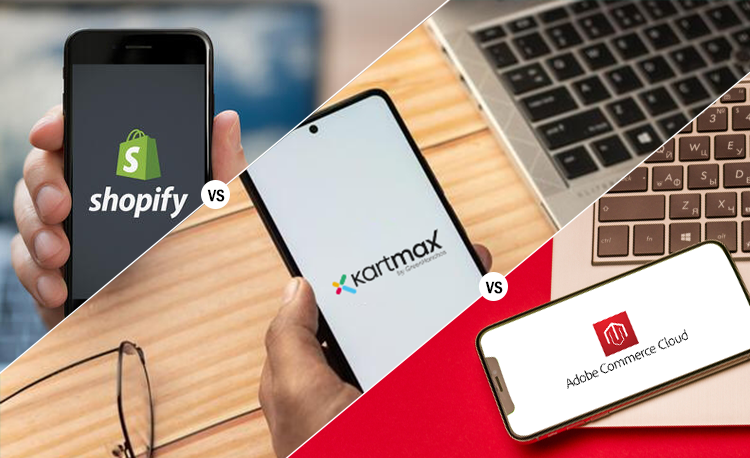Amazon Prime Day 2024 – Trends, Insights, Category Intelligence & Strategies to Maximise Revenue
For many years, July was often considered a slow month for retailers. However, with the…

Marketing your brand at Amazon can exponentially boost your brand’s initial eCommerce journey. As the biggest online marketplace, reaching almost 58 countries and 1.2 Bn people across the globe, Amazon can help you reach limitless audiences and diversify your brand while keeping an eye on multiple growth opportunities.
Beginning your journey at a Marketplace may provide you with the initial boost you need in terms of marketing, credibility, and a consistent flow of sales. These are the areas where you need to focus in order to begin your eCommerce journey and lay the foundation for a profitable and long-lasting business.
However, the challenge comes when you see the stream of thousands of brands fighting to promote their product and listing them on the first page of Amazon. How can you differentiate your brand to get the attention of visitors and convert them into customers? How can you make your product stand out from the rest when you and your competitor are fighting for the same product at the same price and using the same promotional strategy?
Here’s the secret sauce that will help you scale your brand on Amazon:
To improve your Amazon listing, understanding the gravity of what your brand is competing against is essential in the initial days. In categories like fashion, electricals, computer peripherals, skincare, etc. you can get enormous results and hundreds of pages of products filled with your competitors. It’s not possible to search for a ‘black dress’ unless you understand the user intent, map the hot keywords and implement it all in your PLP. Furthermore, surveying your products and your competitors’ goods routinely can make you aware of the best practices that can help you move forward in your journey to rank better in the Amazon digital space.
Take a regular digest of product reviews and Q&A of your contender’s pages. Customers are extremely clear on what their preferences are. This can be an R&D exercise to further improve the product and offer better customer satisfaction. Are customers complaining about instructions? Is the packaging not intuitive? How many customers talk about the cost in their reviews? You need to acknowledge each perspective.
How frequently are the competitors updating their product content, pictures, creatives, videos, etc? Are you aware of the product’s USPs and the benefits that they are putting in? How frequently do they change their price range and what impact does that have on their Bestseller ranking? All of this should be taken into consideration.
It’s paramount to move rapidly while analyzing such things and making changes to see the difference. Assuming you see a competitor’s inventory is out of stock, that might be a great time for you to bring down pricing or potentially increase ads and marketing. In case, your competitor’s inventory reviews are increasing at a quicker rate than yours, attempt to understand the reason. Search for new and creative ideas and be experimentative to find your brand language.
Finally, you need to keep a lookout for all the new ways to promote your brand on Amazon. There are new opportunities for ad placements, as well as, getting your product on the front page that keeps on appearing. Moreover, market awareness can keep your brand on top.
Customers, especially on Amazon, settle in a matter of seconds on whether they need to additionally get in to see the detailed PLP or return to listings. How would you pass this obstacle so the customer goes inside to move him further down the sales funnel? Break everything down, make it informative, simplify it for them, and pull at their impulses.
Does your title make it obvious to customers what your product is and is it viable with their requirements? Does it refer to the brand name? Does it explain what the use case is or any essential advantage? Above all, does it crisply do all of this so it isn’t too lengthy and the consumers are not skimming?
Before the customer looks beneath the desktop or on their smartphone, try to address every key point they need to know. To troubleshoot any problems the customer might run into, warranty and customer care accessibility should be available. Furthermore, try not to have too much content since it is likely to be skipped if it runs over a couple of lines.
Customers must not need to zoom in on the main pictures if they wish to understand what the item is. Include as many pictures as you can from various angles and settings. Pictures with rear angles, guidelines, dimensions, etc provide customers with a sense of the size of the product.
Pictures are great, but videos are even better. Customers are skimming a 10-line long section because they want information in a digestible format and fast. Utilize your brand voice and repeat key USPs while referencing any supporting facts that can assist customers to buy your product.
Reviews are critical. 95% of shoppers read reviews before making a purchase and prefer choosing products with more positive reviews compared to articles with fewer or bad reviews. As referenced at the beginning, reviews on a marketplace like Amazon will affect different channels, including your D2C website, as customers prefer looking at the Amazon PLP first.
Amazon recently rolled out an improvement to the review policy that you might have caught the wind of. Its synopsis is that Amazon is restricting reviews for discounted products for Professional Sellers. Many brands have been providing discounted or free products to clients in return for reviews. A new study of 7 Mn+ reviews showed that the average rating for incentivized reviews was higher than for non-incentivized reviews.
Fortunately, the new change will make things fair and easier for upcoming brands. To boost reviews, shady brands opt for crafty techniques. So, how do you get the reviews up on your PLPs?
Data harvesting is the answer to it. Use any points of data that you might have on the consumers, including contact numbers, email addresses etc. If they liked the product, try to reach out and nudge them to leave a review for it. Sellers on Amazon are permitted to send follow-up messages to clients connected through any particular order. There are a few automated services that can assist you in dealing with this cycle. Speaking of best practices, avoid sending marketing emails or promotional messages, add links to other sites and demand, request, or boost positive reviews.
Amazon has a great ad platform that empowers brands to market their products. These ads are called Amazon Sponsored Product Ads which belong to the PPC (pay-per-click) model. The PPC model allows marketers to promote their articles along search results, on different placements like above, alongside, or below search results, as well as, on PLPs. Here, are a couple of important points to consider when you think about running Sponsored Product Ads on Amazon:
Amazon offers the option of automatic targeting of new brands or novices to Amazon Sponsored Ads. Through these ads, it utilizes its strong search algorithms to recommend a comprehensive rundown of potential keywords for you. Further, this requires picking a flat default bid across all keywords. However, the objective here is to get data on how different keywords perform for your brand or your product. This will help you to move on to running manual campaigns and provide greater control.
When you have garnered enough data, you can move on to assessing your automated targeting campaign to figure out which keywords played out the best. You will need to progress those over to a manual campaign, where you will be able to mention zero in on the most significant and relevant keywords that performed well for you. With a manual campaign, you can adjust bids by keyword. Keep on repeating your manual campaigns for keywords and bids.
Data is your dearest friend, however, if you believe that you should incorporate extra keywords that haven’t performed well, you can test different bid amounts. Different bid amounts can yield different placements and yield shifting outcomes. Therefore, keep on testing until you track down something that functions well for you.
Although to scale effectively and run ads in an organized and efficient manner, it’s better to hire Marketplace Management growth partners like GreenHonchos who have extensive knowledge of everything Marketplace and can also help you build your exclusive online channel. GreenHonchos can prove to be such a growth partner for brands. Helping kickstart, execute and manage the growth of over 200 leading eRetail brands, GreenHonchos is a leading full-stack enabler. GreenHonchos – a Full-Stack eCommerce enabler offers services like growth marketing, eCommerce digital marketing, marketplace management, social media marketing and much more! For more valuable insights on eCommerce marketing and D2C growth strategies, follow us on LinkedIn, Facebook, Instagram and Twitter or visit our website to know more about our services.

In the evolving world of modern retail, success isn’t just...


In today’s global eCommerce ecosystem, marketplaces have b...


In the fast-paced digital world, time is everything, especia...


As Henry Ford wisely said, “The only real mistake is the ...


For many years, July was often considered a slow month for r...


With the overall increase in global retail sales figures, th...


In the...


In the...


The Indian eCommerce industry is transforming at a faster pa...


It’s been a while since Meta introduced its contender to T...


Marketing your brand at Amazon can exponentially boost your ...


The pandemic has brought about a lot of changes and ada...


There is no denying the fact that marketplaces have bee...


The post-pandemic world has made brands realise the importan...


We are living in a digital age where every brand is coming a...


Digital media accounted for 64.4% of global ad sp...


Marketers since generations have banked heavily on the ...


Social Media has grown rapidly in the past couple of years. ...


The first step towards building a successful business i...

Want to take your eCommerce business to the next level? We help businesses make the most at every stage - from product conceptualization to achieving the maximum optimization & ROI on business operations.
B-24, Sector 3, Noida, GB Nagar,
Uttar Pradesh 201301, India
Mazaya Business Avenue, Tower AA1,
FZCO, Office #18, 36th floor, JLT, Dubai, UAE
1st Floor, Plot-183, Indiranagar Stage 2,
Bengaluru, Karnataka,
560038, India